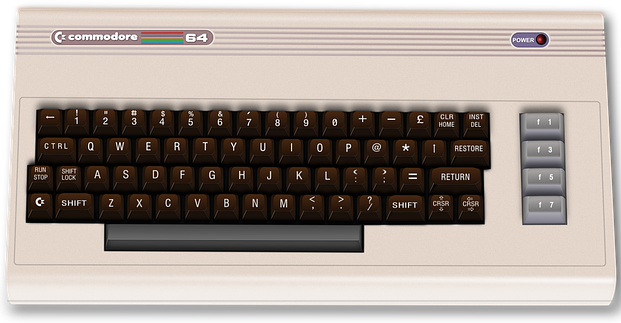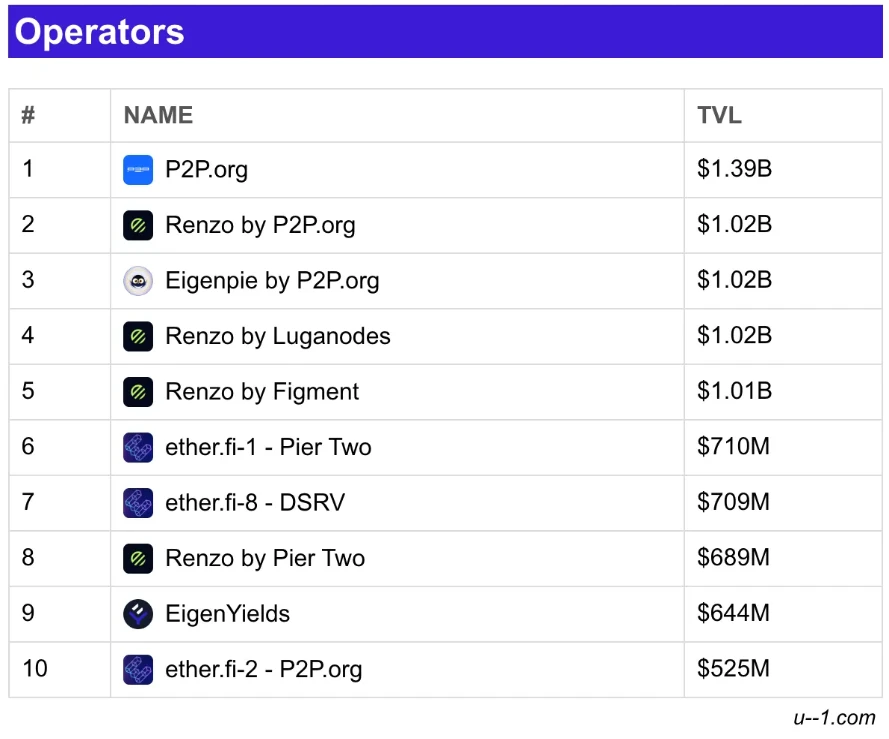原作者: 知者
原文翻譯:白話區塊鏈
今天這篇文章將介紹一些主要的RaaS(Rollups-as-a-Service)提供者以及作者對Restake的看法。

1.關於Rollup
考慮到 Rollup(L2 和 L3)的觀點,RaaS(Rollup-as-a-Service)是一個有爭議的主題。一方面,支持者認為像 Caldera 和 Conduit 這樣的平台使得建立 Rollups 變得非常容易,這對整個生態系統的發展是正面的。另一方面,有些人認為我們已經擁有足夠的區塊空間,這些工具變得無關緊要。我個人的觀點介於兩者之間,雙方都有一些強而有力的論點。我相信 Rollup 基礎設施對該領域無論大小都是正面的,但我也可以理解為什麼人們對這項推動加密貨幣採用的技術持懷疑態度。
L2 Beat 列出了大約 55 個活躍 Rollup,截至撰寫本文時,前五名(Arbitrum、Optimism、Base、Blast 和 Mantle)佔市場份額 82.74%。我不確定這是否應該被視為加密領域早期、無差別 Rollup 設計的症狀,或者是對大多數 Rollup 普遍缺乏興趣的症狀——也許這是三者的結合。
Arbitrum 和 Optimism 無疑是最成熟的 Rollups,它們目前更像是真正的鏈(而不是以太坊附屬鏈)。 Base 擁有一個非常活躍的社區,並且可能是目前位置最好的 Rollup,儘管其鎖定價值較少。類似的情況也適用於 Blast,儘管我不確定它們更高的鎖定價值是否比 Base 建立的社群更具吸引力,而 Base 是在沒有遊戲化積分計劃的情況下建立的。 Base 甚至明確表示不會發行代幣,但沒有人在意,因為這是第一個出現自發性活動的 Rollup——Arbitrum 和 Optimism 甚至在空投宣布之前就已被大量開採。
Mantle是我非常陌生的Rollup,但我簡單地瀏覽了一下生態系統,認為它們比Mode、Manta甚至Scroll定位更好。它們未來的發展完全取決於鎖定價值的流入和新應用的部署,這兩者都需要在進一步發展之前確定。
L2 Beat 即將推出的 Rollups 清單有 44 個項目,比目前存在的 55 個活躍 Rollups 更令人擔憂。這 44 個 Rollup 使用了各種不同的設計,例如 Optimiums 和 Validiums,但最終它們都在競爭同一個市場。令人擔憂的是,很少有活躍的 Rollups 能夠從「模組化執行層/以太坊子鏈」「跳躍」到主鏈,而主鏈恰好是 L2。
當多年的開發人員人才累積到一個基本穩定的基礎層時,L1 就會成功,為社區形成和生態系統創建提供機會(想想Solana 的Memecoin 賭場時代、以太坊的DeFi 夏季熱潮,甚至比特幣的序數)。 Rollup 的實用性來自於它與基礎層的共享安全性,當時的 99% 是以太坊,除非您談論的是 Solana 的 L2 及其相對較低的交易成本。
我認為僅靠技術不足以讓 Rollup 在意識形態或市場份額上變得重要,一些「最強大」的技術(例如 Scroll、Taiko 和 Polygon zkEVM)甚至還沒有取得突破就證明了這一點鎖定價值遊戲的進展。也許從長遠來看,這些團隊確實看到了鎖定價值的增加,但基於目前的情緒和缺乏追求,我不認為這種情況會發生。不,您的八個用戶不想參加另一場 Galxe 活動,他們絕對不想要可以兌換不可轉讓代幣的積分。
如果您可以將自己置於一個全新的、幸福無知的加密貨幣投資者的境地,您對 Rollups 有何感想?除非它有一些可以用來賺錢的 memecoin,否則我不確定你會因為看到第 15 個零知識 Rollup 和相當於 EVM 的 zkEVM 而欣喜若狂。
這個簡短的分析(只是快速瀏覽一下 L2 Beat)看起來相當悲觀,但只要我沒有在 L2 或 L3 上投入資金,我就可以接受。我不認為越來越多的 Rollups 對這個領域來說一定是一件壞事,但我們應該更坦誠地對待它帶來的實用性。在過去的幾個月裡,許多應用程式已經成為特定於應用程式的鏈(Lyra、Aevo、ApeX、Zora、Redstone),我懷疑這種趨勢將持續下去,直到從Uniswap 到Eigenlayer 的每個人都成為L2 為止。
因此,雖然我們無法阻止部署新 Rollup 的數量,但至少我們可以嘗試誠實地對待它對加密貨幣的影響。我們擁有如此多的區塊空間,以至於以太坊主網甚至不需要任何額外的區塊空間——現在完成一筆交易可能最多需要花費 $10,而且已經這樣持續了幾週。
像 Conduit 和 Caldera 這樣的 RaaS 提供者很難區分,我這麼自信地說,是因為希望有人能糾正我的錯誤。以下是各自 Rollup 部署流程的快速概述:
-
Conduit 提供 OP Stack 和 Arbitrum Orbit; Caldera 提供 Arbitrum Nitro、ZK Stack 和 OP Stack。
-
Conduit 提供以太坊、Arbitrum One 和 Base 作為結算層;火山口沒有列出沉降層,但我想它可能非常相似。
-
Conduit 的 DA 產品包括以太坊、Celestia、EigenDA 和 Arbitrum 的 AnyTrust DA; Caldera 提供 Celestia 和以太坊,但計劃很快整合 Near 和 EigenDA。
-
Conduit 允許您使用任何 ERC-20 作為原生 Gas 代幣; Caldera 允許您使用 DAI、USDC、ETH、WBTC 和 SHIB。
總體而言,這兩個平台非常相似。我想唯一的差異可能來自於團隊的實際諮詢經驗。我還沒有與任何一個團隊交談過,所以如果其中任何內容顯得倉促或不知情,我深表歉意,但我認為他們會欣賞誠實地看待 RaaS 和行業現狀。
我考慮過創建自己的 Rollup,只是為了好玩,但我無法合理地每月花費 $3,000 維護一條虛擬鏈(除非風險投資家想 PM 我,我們可以談談)。
總的來說,我支持 Rollups 即服務 (RaaS),並希望從事該領域工作的每個人都繼續努力。我真的不認為它有什麼問題,考慮到我們行業的現狀,關於「Rollups 太多」的爭論毫無意義。
2. 關於重質押
雖然我們正在討論行業現狀,但現在是簡要討論我對 Restake、LRT、AVS 和 Eigenlayer 的一些不滿的好時機。
截至目前,Eigenlayer 中存入的以太坊數量龐大,約 514 萬。起初,我以為積分計畫結束後大部分資金都會損失,但令我失望的是,最近的空投公告並沒有導致資金流向更有價值的地方,反而增加了資金。對於那些期望 Eigenlayers 空投能夠輕鬆增加 20-25 倍資本的人來說,我認為他們可能有點自欺欺人,但沒想到他們之後幾乎對所有主要國家進行了地理封鎖。已經有很多推文表達了對 Eigenlayers 雙重標準的不滿(包括我自己的一條推文),但我真的認為討論這個問題沒有任何意義了。
該團隊還發布了一份大型白皮書,解釋了 EIGEN 的工作原理,並引入了一個稱為主體間效用的新概念。事實上,沒有人真正知道這意味著什麼,也沒有人在討論它,因為 EIGEN 最初是不可轉讓的,這對於想要圍繞其協議建立社區的人來說是一個巨大的禁忌。如果人們無法透過代幣或圍繞代幣的生態系統致富,人們就會轉向有賺錢可能性的領域(例如迷因幣)。
我對 Eigenlayer 或團隊本身沒有任何問題,我想提前澄清這一點。然而,我確實對 Restake 和目前在 Eigenlayer 上列入白名單的 AVS 籃子有疑問。考慮到已經存入 Eigenlayer 的超過 500 萬 ETH,你可能會認為人們能夠獲得非常高的收益,對嗎?我在這裡告訴大家,這個假設是錯的。
當您考慮重新抵押的效用時,您預設會從世界上經濟上最穩定的區塊鏈驗證器集合中獲取經濟安全。您將各種類型的 stETH 投入到 Eigenlayer(或 Karak,最終是 Symbiotic)等重新抵押平台中,以換取本已有吸引力的 stETH 收益率的更高收益。我的問題是,resttake 本身沒有固有的收益生成,而收益必須來自 Eigenlayer 內提供的 AVS。如果您是 Restaker,在 Eigenlayer 中存入 10 stETH 並將這些剩餘的 ETH 委託給 ether.fi 等運營商,那麼您需要相信他們會選擇正確的 AVS 籃子來為您產生收益。
但這些好處從何而來?
事實上,以太坊並沒有在協議層面承諾,如果 ETH 質押者將風險投入到重新質押協議中,他們將獲得更多獎勵。收入只能來自一個地方:AVS 自己發行的代幣。
我不是專家,但我也很難理解為什麼沒有人在 Twitter 上問這個問題。當然,更重要的問題,如不良空投和以太坊安全風險,正受到更多關注。但為什麼沒有人問一個簡單的問題:Eigenlayer 啟動並且懲罰機制最終啟用後會發生什麼?
當團隊既沒有討論潛在收益率的實際數字,也沒有結轉超過 $10M 的資產,但又擁有超過 $500M 或更多的再抵押 ETH 時,我還有什麼動力繼續存放我的資產呢?

我們處於一個有趣的情況,Eigenlayer 上的前 10 個運營商平均每個運營商註冊了 5 個 AVS,並且它們之間存在顯著的重疊。 Eigenlayer明智地宣布,懲罰機制將在大約一年內啟用,以便讓大家適應新的重質押現實。考慮到除了 Gauntlet 和 Mike Neuder 之外沒有人討論重新抵押的風險,這是一個明智的決定。雖然這兩篇文章都非常好,但實際上並沒有提供任何具體的例子,因為目前的AVS效果甚微。
正如我之前所說,Eigenlayer 的優勢是顯而易見的。但是否有必要為每個新興協議提供近 10 億美元的用戶 Restake ETH 並使其面臨未來的風險?雖然懲罰機制尚未啟用,但不到一年就會啟用——運營商是否充分意識到他們的 Restake 風險以及後續每次 AVS 註冊所帶來的風險?
我對此不太確定。也許我們會看到其他一些重新抵押平台逐漸蠶食 Eigenlayer 的市場份額,理想情況下,它們會獲得產品市場契合度,並向 AVS 提供少量重新抵押 ETH,而不是相反。
本文來自網路:Crypto Talk: Somethought on RaaS and Eigenlayer
簡而言之,狗狗幣的價格正試圖收在 $0.16 上方,這是啟動反彈至 $0.20 的關鍵。 48小時內持倉量增加近$2億,交易者渴望價格上漲。 Meme 幣遠未達到市場頂部,因為其流通供應量中只有不到 84% 能夠獲利。狗狗幣 DOGE 價格自 5 月初跌至 $0.12 的低點後已回升。雖然迷因幣龍頭卡在$0.16的關卡之下,但還是可以被清除的。狗狗幣價格預期上漲 狗狗幣的價格顯示投資者的看漲情緒激增。可以看到交易者建立了多頭合約,這導致未平倉合約上升…







